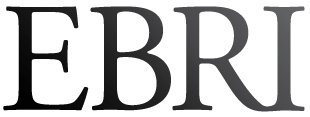Summary
The Impact of Hours of Work on Employment-Based Health Benefits
• Declining employment-based benefit coverage: Since 2000, there has been a reduction in the percentage of individuals under age 65 with employment-based health benefits: 62.4 percent of the nonelderly population was covered by employment-based health benefits in 2004, compared with 66.8 percent in 2000.
• Reasons cited: Numerous factors have been cited as contributing to the erosion of employment-based health benefits. These include both structural changes in the work force (the movement of jobs and workers from the manufacturing sector to the service sector; the growth of jobs in small firms; decreased unionization) and nonstructural changes (such as the rising cost of health benefits, and a decline in take-up rates among workers with access to health benefits). Public policy designed to stop the erosion of employment-based health benefits must treat these changes with different approaches, if it is to be effective.
• Work trends affect health benefits: An increasing share of the U.S. labor force is employed part-time: 17.5 percent of workers ages 18–64 were employed part time in 2004, up from 16.3 percent in 2000. The movement of workers from full-time status to part-time status has significant implications for their health benefits: In 2004, 18.6 percent of workers employed part time were covered by employment-based health benefits through their own employer in 2004, compared with 61.5 percent of full-time workers. As a result, any shift of workers from full time to part time will likely lead to fewer workers with employment-based health benefits unless they obtain them from another source, such as a working spouse.
Typical Health Benefit Package in Private Industry
• Offer vs. take-up rates: This article presents data from a variety of sources about private-sector health benefits. For instance, the offer rate of health benefits among private-sector health plan sponsors was 61 percent in 2005 for active workers, and 4–5 percent for retirees. The take-up rate of a medical care plan among workers who both had access to and participated in the plan was 75 percent.
• Plan type: The predominant type of health care plan was the PPO, or preferred provider organization type of managed care plan (covering 67 percent of participating workers in 2003), followed by an HMO, or health maintenance organization (covering 24 percent of participating workers). So-called “traditional” indemnity health plans covered 7 percent of participating workers.

